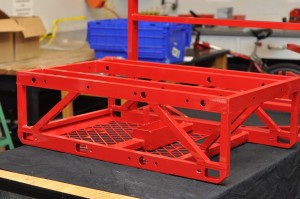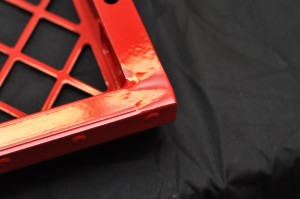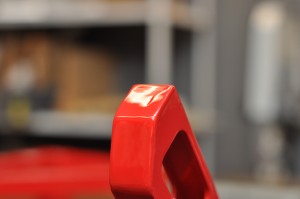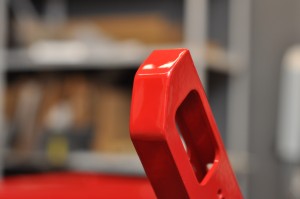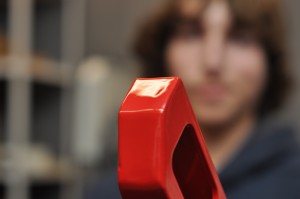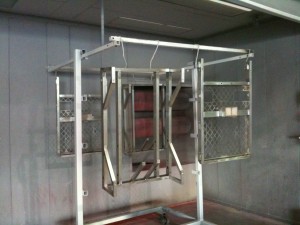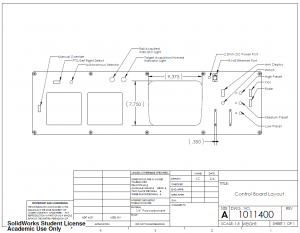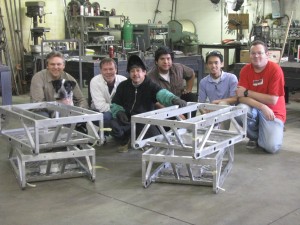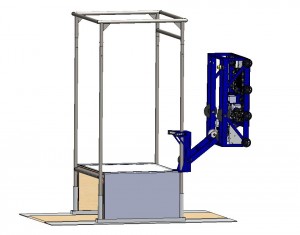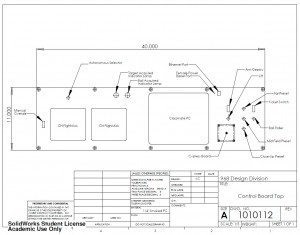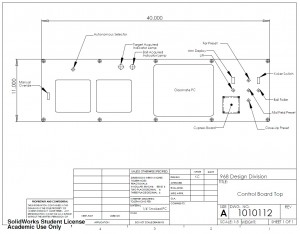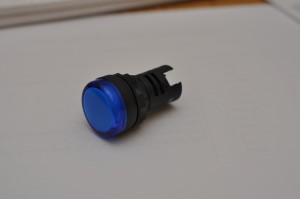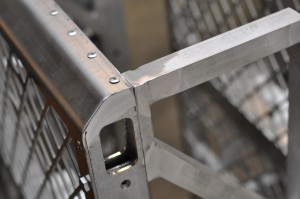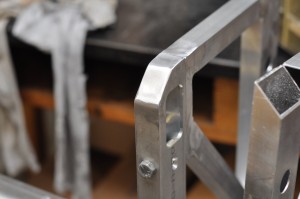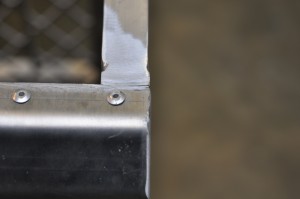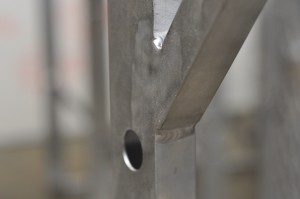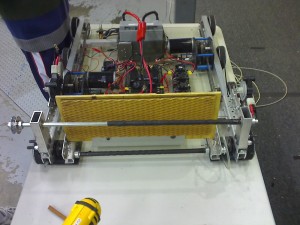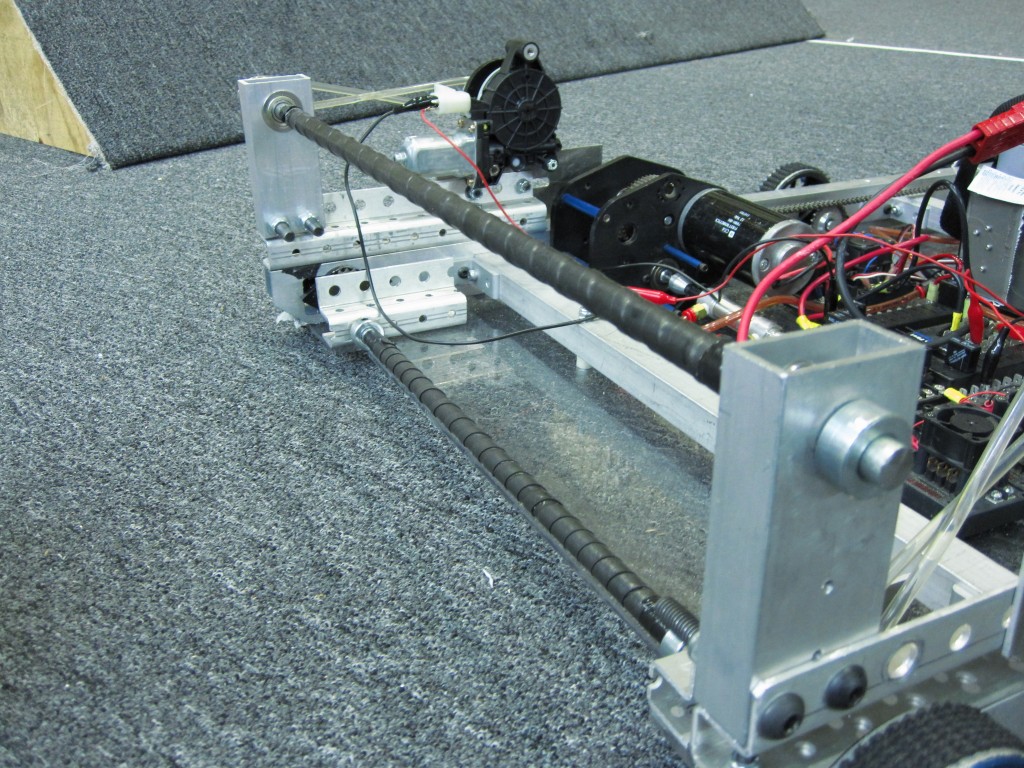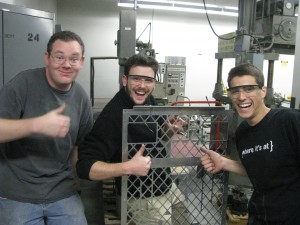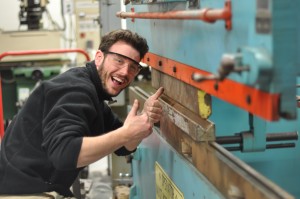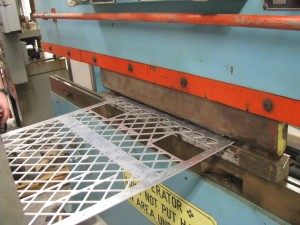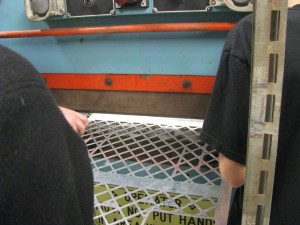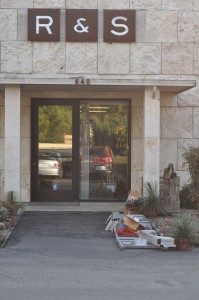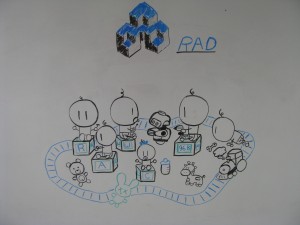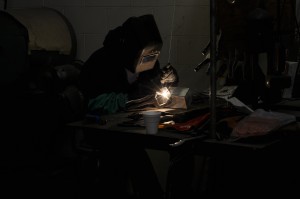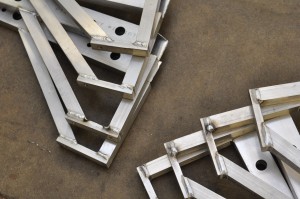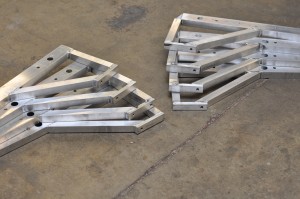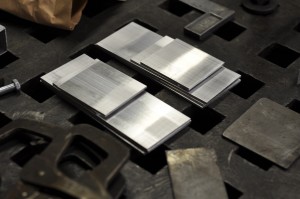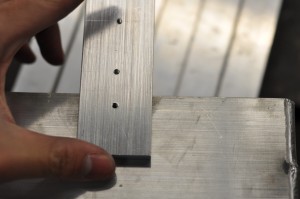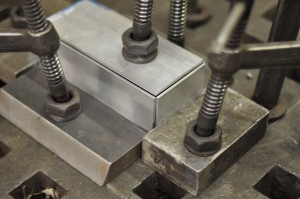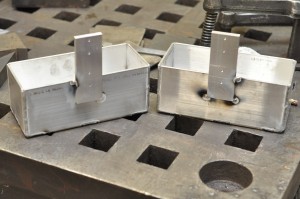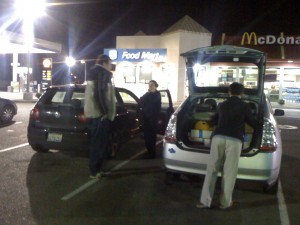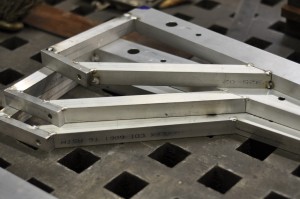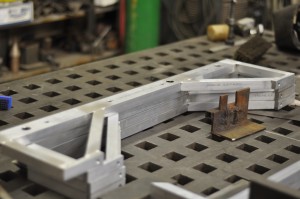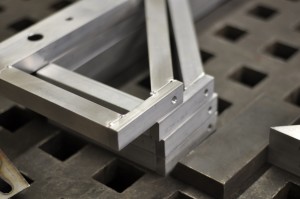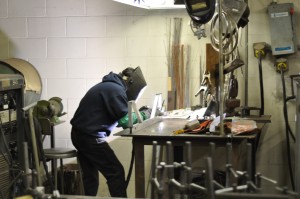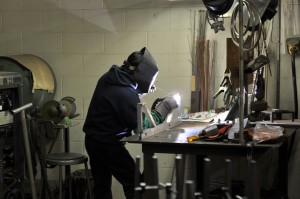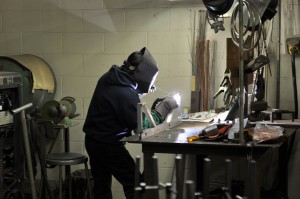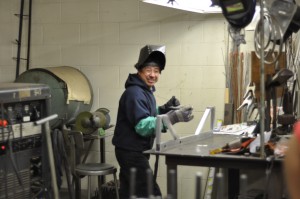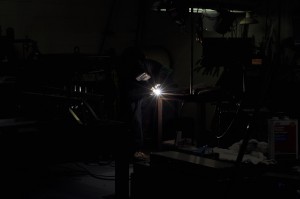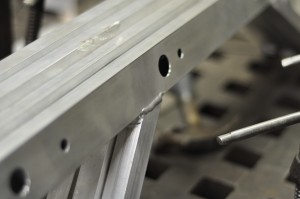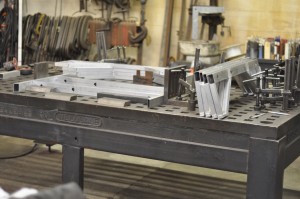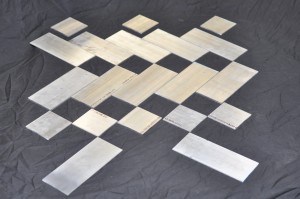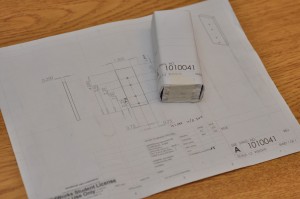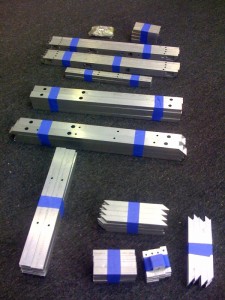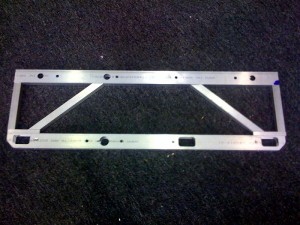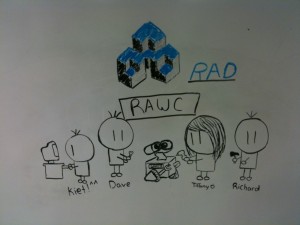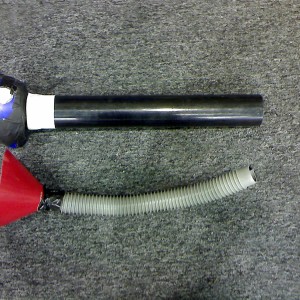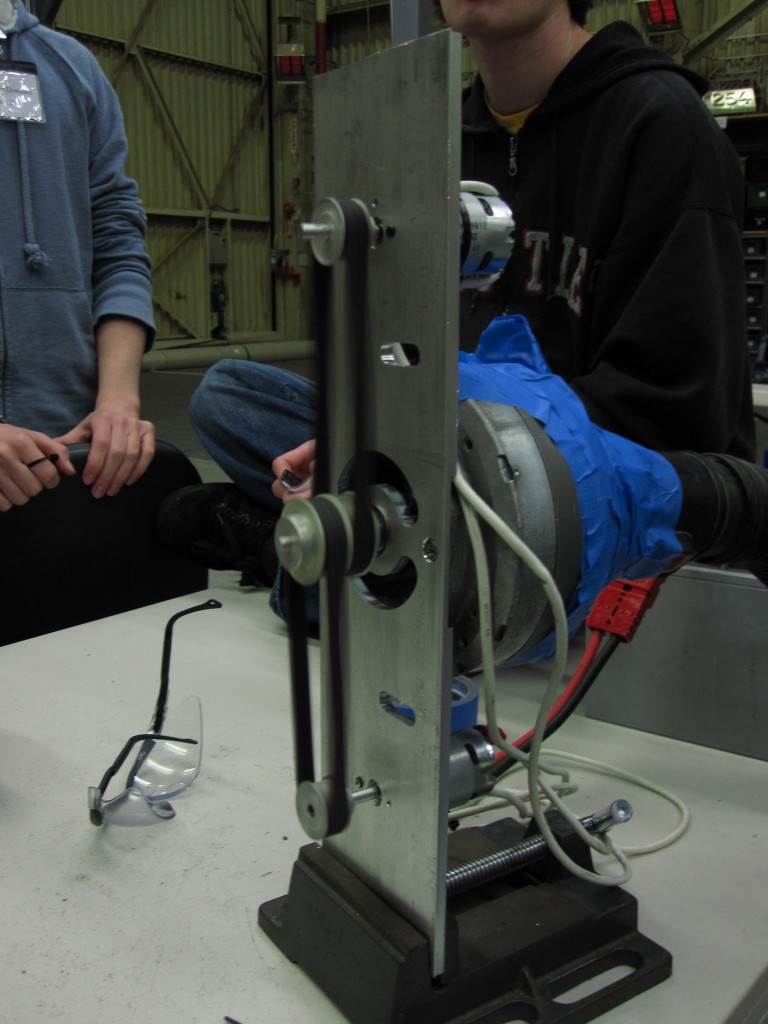Blog
We haz powdercoat.
We haz powdercoat.
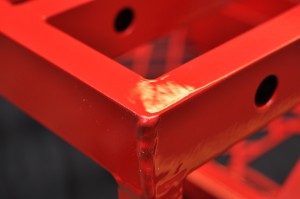
Unfortunately, Central Powder Coating was not well staffed today. They will have the 254 frames powdercoated blue streak #2 tomorrow morning.
Revised Control Board Layout
This revision includes the cutout for the Classmate pc, contours and filets for the ethernet jack, holes for the LED mounts, screwdriver slots for the Cypress board and finally, an additional cutout that replaced the roller button.
Progress
Manufacturing
Pacific Precision is able to make the output shafts; unfortunately they will not be done until late next week. We also confirmed that the robot frames will be ready to be picked up from Central Powder Coating at the end of business day Thursday. We continued progress on machining the bumper mounting pins, and will begin on the kicker piston bearing cones once the bumper mounting parts are complete.
Design
The control board CAD is being revised and we purchased all of the components for the boards.
Other News
We secured a local embroidering shop to make the team numbers on the bumpers.
We have contacted Motion Industries for a quote for all the ball bearings, and are currently awaiting word back.
Progress
MANUFACTURING
The manufacturing team has been working hard to complete parts for the drivebase. After completing gears and sprockets, we have moved onto the construction of the shifting dogs for both the drivetrain and the kicker winch.
DESIGN
The design team has been working to finalize a myriad of parts so that manufacture can begin. The plates for the kicker winch and arm have been finalized, and will begin being waterjet at BAE Systems tomorrow after the material is delivered. Design on the rollers is continuing, implementing the Clutch that we have purchased from McMaster-Carr.
Welding Complete, Off to Powder Coat
Today the welding was completed at Ride & Show Engineering, and the frames were delivered to Central Powder coating. The picture below shows us with the kind folks at Ride & Show.
Control Board
Update: Here’s the newer revision of the control board. I’ve added an ethernet port and a female barrel plug for the Classmate PC.
Here’s the first revision of the control board with a suggestion of buttons and functions.
We will be using this LED w/Defuser(Red and blue??)
Roller Prototyping Progress
Today, we continued prototyping dual roller systems. We worked hard to emulate the drawings we had, but still found minimal success with the belt-driven systems. The faster the rollers were moving, the better the results. However, if the rollers were moving too fast, the window motors would stall and be damaged.
At the end of the evening, we strapped a Dewalt 3 Speed Drill onto the robot. With the shifter on middle or high speed and the clutch set very low, we were able to obtain and hold the ball extremely well. Videos of this system at work are below.
(There was a video here that has sadly been lost in the archives.)
(There was a video here that has sadly been lost in the archives.)
General Update
We continued to revise the two horizontal-rollers prototype so that it would be ready for proper implementation on the final design. Some of the most recent changes made include a stop, so that the ball is physically limited from entering more than 3 inches into our robot. Unfortunately in the earlier tests the ball actually entered 4 inches into our robot and roughly 1/16 inch off the ground. We also shifted the upper roller as forward as possible while retaining space for the bearing and moved the lower roller forward. The roller speed was also increased from the window motors with a 4 to 1 pulley reduction Videos should follow tommorrow after the design is perfected further.
Down in the shop we continued to pocket gears on the CNC and several sets for both the drive-train gearbox and the shooter winch gearbox have been manufactured already. Hopefully by the end of tommorrow we will be for the most part done pocketing the gears (at least the ones finalized on the design). They will be ready for ship by Monday or Tuesday.
Prototyping Progress
Dual horizontal rollers with tennis racquet grip tape = money.
Team 254 finally finished the initial prototype for dual horizontal rollers this evening (Based on 148’s prototype) and after much tweaking we found that the rollers held the ball securely and within the limits of the rules. The mechanism uses two small window motors running continuously (at least in this prototype), and it has little difficulty with picking up a ball on the go. For a final design, the rollers should spin faster to ensure that the ball is picked up 100% of the time, and actual placement of the rollers will need to be tweaked to perfection.
(There was a video here that has sadly been lost in the archives.)
(There was a video here that has sadly been lost in the archives.)
On the third day…
After calling many fabrication shops in Southern California within a radius of 45 miles, we ended up at the California Polytechnic University, Pomona shop. Our metal forming division was lucky enough to find the proper die to create the 45 degree bends on a 100 ton press brake. Setting up the machinery and completing the bends took 6 hours.
Our newly acquired sponsor, TOMCO Products in Azusa, was able to perform the 90 degree bends with a very quick turn around.
Below are our newly trained press brake operators holding the first bent plate
Here’s one of our highly skilled operators hard at work(or hardly working)
Here’s a plate being formed
Here’s another photo of a plate being formed
Here’s our assembly and inspection division test fitting the formed pieces
Here’s where Jesus joins metal with all his might
(There was a video here that has sadly been lost in the archives.)
Oh, and uhh.. here’s the current status of the parts:
We currently have one fully welded base, two tacked bases, and one base waiting to be welded.
Jesus needs to take a break, so, he’ll be back on Friday to complete joining metal.
Finally, below is an artist depiction of our team’s weekly activities courtesy of our comic division:
The work of Jesus
Today, the battery boxes and superstructure sides were welded. We’re attempting to bend the base plates before we go ahead and begin to weld the drive base.
In the meanwhile, here’s some photos of Jesus and his special touch.
Jesus welding a battery box
The completed welds on the superstructure sides
Here’s another shot of the superstructure sides
Here’s the battery box plates before they’re welded.
Attempting to center the battery connector tabs
Here’s the jig that we used
Here are two almost-complete battery boxes(tack welds need to be filled in)
In the hands of Jesus
The events portrayed in this post are from 10:30 PM to 6:47 PM. Events occur in real time. (Que 24 music)
10:30 PM: Kiet and Richard leave West Covina to meet Kirk in Kettleman, CA.
1:40 AM: Goods are exchanged (as pictured)
Loading the goods to the Prius
All the goods are accounted for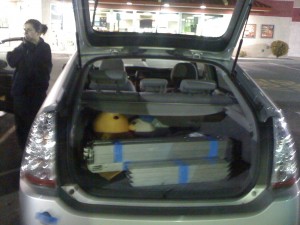
8:00 AM: Arrive at Ride and Show with robot parts. Assemble the superstructure sides and Jesus tack welds all 8 pieces.
Three superstructure sides that were just tack welded
These superstructure sides cleaned up and ready to be welded
Jesus welding a superstructure piece
3:00PM: Shafts are picked up from Pacific Precision
3:30PM: Jesus welds 4 superstructure sides and the other 4 are ready for tomorrow morning.
Four fully welded superstructure sides
Four fully welded superstructure sides and the other four are ready to be welded
3:40 PM: Picked material to make the back tube for the robot chassis and will be machined later today.
4:00 PM: Shafts from Pacific Precision are picked up.
5:20 PM: Battery Box Side Plates are finished and prepped for welding tomorrow.
Battery Box Side Plates
5:40 PM: The Battery Tabs are prepped to be drilled and tapped at Ride & Show tomorrow
Battery Tabs Queued For Machining
6:47 PM: Shafts are packaged and shipped to 254
Kiet will be escorting the box to shipment location
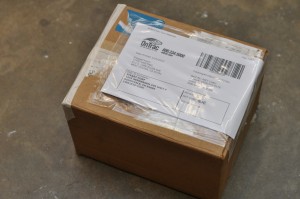
Zero to Robot Parts in 6 Hours (or so)
All of the robot chassis and super structure parts were completed today and are on their way to West Covina to be welded and then powercoated. The front plugs will be machined tomorrow and will be mailed down to arrive on Tuesday at the same time that the base plates that Mike D from team 233 made for us.
Here is a picture of the 12 different sets of pieces that are on their way down.
Here is a picture of the pieces set next to each other to give you an idea of what it will look like completed.
Additional Vertical Roller Testing
This was a test using dual 1/2″ rollers wrapped with duct tape. During the test, the rollers separated slightly after coming in contact with the ball once hitting the 3″ limit(simulates a spring loaded roller system).
(There was a video here that has sadly been lost in the archives.)
Lifting Arm Calculations
Review the PDF linked below for calculations for the lifting arm. If the PTO is driven on the low gear side (14 to 64), then an additional reduction of approximately 8:1 will be required to drive the arm. This is easily achievable in two stages. If the PTO is driven from the high gear side (30 to 48), then an additional reduction of about 23:1 is required – still achievable in two stages, but requires rather large and small sprockets. With 4 CIMS, the lift can occur in about 1/2 second. With only 2 CIMS, it could still work if geared properly (twice the reduction), but it would take twice as long.
The calculations below are presented in a fashion that should be understandable by the astute high-school student who has completed a Physics class.
Vertical Rollers Testing
During the previous two days, we attempted to design and prototype different roller orientations with minimal success. Before we were able to record a video of the horizontal roller setup, we determined that the setup held the ball well(going forward). While attempting to move the prototype backward, the ball would not stay in contact with the roller.
Oy. We determined that his was definately a problem. Horizontal roller utilizing a 1/2″ diameter round shaft will not meet our required specifications.
We moved onto an idea that our student design group envisioned… dual vertical rollers.
The vertical roller test(s) utilized the following parameters:
1. One roller spinning at half speed, one at full
2. One roller with rotational resistance, one roller at half speed(This test demonstrated the best results)
3. Both rollers spinning at full speed
We determined that the vertical roller setup requires that the ball is only pulled into the prototype under a specific set of conditions. (It doesn’t really work…..)
Please note that this is a proof of concept test.
(There was a video here that has sadly been lost in the archives.)
The artist depiction below displays the team hard at work on new prototypes.
Today’s Progress
Today we began to manufacture the robot frame. Currently the CNC is turning them out after a laborious 3 passes in order to bore all the holes. Hopefully we will have them done and ready to ship out by tomorrow afternoon.
We also furthered our progress on the vacuum prototype, unfortunately with little success. Increasing the size of the hose running to the suction cup did not yield any positive results. We should continue to explore the benefits of the vacuum as it seems the most promising ball-manipulation system.
Manufacturing and Prototyping Progress
MANUFACTURING
Today, construction on the tensioner cams was completed.
PROTOTYPING
Today we did extensive prototyping with vacuums. We continued to work with the two-stage impeller assembly hooked up to 2 fisher price motors. The impellers are currently running with a 1:1 reduction off of the fisher price motors. We hooked it up to a 4″ funnel which we mounted on the front of the 2009 drivebase.
The vaccum seems to work much better than any roller systems we have found. It maintains good suction on the ball. The only potential issue is getting the ball, which may be able to be solved with adequate driver practice.
(There was a video here that has sadly been lost in the archives.)
(There was a video here that has sadly been lost in the archives.)
(There was a video here that has sadly been lost in the archives.)
(There was a video here that has sadly been lost in the archives.)

